This post may contain affiliate links. If you make a purchase through a link, I may receive a small commission, at no cost to you. These commissions help keep this website up and running, and I thank you for your support. Read my full disclosure here.
A sharp knife is essential in the kitchen. There is nothing more frustrating than trying to cut a tomato with a blunt knife and only end up squashing and mashing it. Not only is it easier and faster to prepare your meals, but sharp knives are also much safer, as they are much less likely to slip, which ends up in you getting cut.
The first step to a good kitchen knife is investing in a quality blade. I prefer the super sharp Japanese Global knives. These Asian knives have a fine, sharp, 15-degree edge. Because of this extra fine edge, they are considered to be more fragile. Alternatively, the standard European and American style knives, like the respected Dexter Russell chefs knife, have a 20-degree edge. Once you have your quality knife, the next step is maintaining its edge, which includes regularly sharpening it.
This weekend, I set about sharpening my knives, which is super easy to do, and only takes 5 minutes. (Which made me question why I hadn’t bothered to get around to doing this earlier). All you need is a few key pieces of equipment.
Safety Gloves
Safety first! To ensure you don’t cut yourself, wear some cut resistant gloves as you sharpen your blades. After very badly grating off my knuckle to the bone (not the first time, but definitely the worst time), and spending several months using special dressings to regrow the flesh (gross I know), I purchased myself some cut resistant gloves. Considering how cheap these things are, I wish I had purchased them a long time ago. They are very durable and light and not bulky at all, and very comfortable to use. These gloves are amazing, I use them whenever I grate and if I am doing fine chopping with our super sharp Global knife. They are also easy to wash, you can just throw them in the washing machine. I tend to give mine a hand wash in the sink with some kitchen detergent, then hang them out to dry on the rack.
How to Sharpen Your Knives The Professional Way
If you are keen to take your knife sharpening skills to a professional level, then you need to use some serious knife sharpening equipment. I’ve listed your essentials below as well as video tutorials to get you started.
Sharpening Stone
The best piece of equipment to sharpen knives is a whetstone such as this Premium Sharpening Stone 2 Side Grit 1000/6000. You can sharpen both Asian and Standard European and American knives by holding the knife at the correct angle. However, you do need to have some level of skill to use these sharpening stones, something I don’t really have.
Sharpening Steel
Another popular device is a sharpening steel. However, be aware that technically a steel only ‘hones’ the blade, which maintains the blade but doesn’t really get it super sharp. To do this, you need to finish it off with a whetstone. You really need to know what you are doing with a knife steel, because otherwise, you can damage the blade and make it even blunter. I have tried to use a steel, but I can never get my knives very sharp because I am not very good at using them.
How to Sharpen Your Knives The Easy Way
I definitely don’t have any knife-sharpening skills, so I go for the easy options. Here is how I sharpen my Asian and standard knives using simple knife sharpening equipment that requires no skills, and takes about 5 minutes.
Ceramic Knife Sharpener for Asian Knives
I was lucky enough to get a ceramic sharpener for free when I bought my Japanese Global knife. But you can also purchase a Global Ceramic Knife Sharpener from Amazon. Sharpening with a ceramic rather than a whetstone is much faster as it is much harder. Ceramic also lasts longer.
The Global ceramic sharpeners are quite pricey, so here is a link to a similar, but cheaper, ceramic sharpener. I haven’t tried this one, but it gets good reviews.
To sharpen your blades, you need to follow the Global ceramic sharpening instructions
Step 1: Fill the sharpener with water and leave it to soak for 3-5 minutes. The water helps the ceramic sharpeners work their best.

Step 2: Place the sharpener on your sturdy kitchen bench or work surface.
Step 3: Wearing your cut resistant gloves, firmly grip the handle of the knife sharpener and run the blade gently through the first courser white slot 7 times. There is no need to apply excess pressure as the ceramic wheels will do all the work and are set at the perfect angle to sharpen the blade evenly.
Step 4: Then pass the blade through the pink ceramic wheels 7 times. You can test the blades sharpness by running it across some paper.
Step 5: After sharpening, give your knife a good clean to remove any residue. See my instructions for cleaning your knives below.
Knife Sharpener for Standard European and American Knives
To sharpen your standard European and American knives with a 20 degree edge, try this popular Chef’sChoice 464 Pronto Diamond Hone Manual Knife Sharpener for Serrated and Straight Knives.
Step 1: Place your knife into the stage 1 slot and lean it against the left side of the slot and slide it through the device. Then pass it back through the stage 1 slot but this time, lean the blade against the right side. Continue to alternate like this 3 – 4 times.
Step 2: Move the knife to stage 2 and similarl to above, lean it against the left side of the slot and slide it through the device. Then pass it back through the stage 2 slot, but this time lean the blade against the right side. Continue to alternate like this 3 – 4 times.
Combined Asian and Standard Knife Sharpener
In order to cut down on the amount of equipment in your kitchen drawers, think about purchasing a dual sharpener that will work on both Asian and standard European and American knives. The devices listed below are a lot more versatile because they work well on double and single sided blades and also on serrated blades.
These are the top two rated combination/dual sharpeners on the market that work on both Asian and standard European and American knives:
- Cheaper model: Chef’sChoice 4643 ProntoPro Diamond Manual Knife Sharpener for Euro-American and Asian Style Knives
- Luxury model: Chef’s Choice 1520 Angle Select Diamond Professional Electric Knife Sharpener for 15 & 20 degree Knives.
Sharpening Asian Knives
Each stage has two slots. If your knife has a double sided edge, then alternate it between the two slots. If only has a one sided blade, then only use the first slot.
Step 1: Place your double sided Asian style knife into the stage 1 slot and slide it slowly and smoothly through the device, alternating between the two x stage 1 slots. You should only need to alternate twice on each side of stage 1.
For single sided Asian knifes, only use stage 1’s first slot.
Step 2: Move the knife to stage 3 and similarly, slowly slide the knife through the slots and alternate between the two. 3 – 4 alternating pulls should smooth off and finish the knife.
For single sided Asian knifes, only use stage 3’s first slot.
Sharpening Standard European & American Knives
Step 1: Place your double sided style knife into the stage 2 slot and slide it slowly and smoothly through the device, alternating between the two stage 2 slots. You should only need to alternate twice on each side of stage 2.
Step 2: Move the knife to stage 3 and similarly, slowly slide the knife through the slots and alternate between the two slots. 3-4 alternating pulls should smooth off and finish the knife.
Sharpening Serrated Knives
Step 1: Place your serrated knife into the stage 3 slot and slowly slide it through, alternating between the two slots. 3-4 alternating pulls should sharpen the knife.
How to Clean Your Knives
Tempting as it is, don’t wash your knives in the dishwasher. Cleaning them in the dishwasher causes the blade to go blunter quicker due to the intense heat and moisture which can also cause rust. They can also end up rattling around and banging against the plastic dishwasher racks and other items, which causes fine chips in the blade. Dishwasher detergent can also be corrosive (especially the salt that it can contain) and cause pitting and dull your blades. Instead, you need to wash your knives by hand in hot, soapy water and dry them with a tea towel.
How to Store Your Knives
Some knives come with their own storage case or knife storage block. However, most don’t. Firstly, don’t place your knives in your cutlery drawer. Not only is it dangerous because you might end up cutting yourself, but it also causes fine chips and trauma as the blades bang and rub up against the other items in your drawer.
Kitchen Knife Storage Options
- a universal fibre knife block. I bought mine from Ikea, but they are available on Amazon.
- a bamboo magnetic knife block which sits on your bench top.
- or, for a more space efficient option, you can get a steel magnetic strip to attach to your kitchen wall.

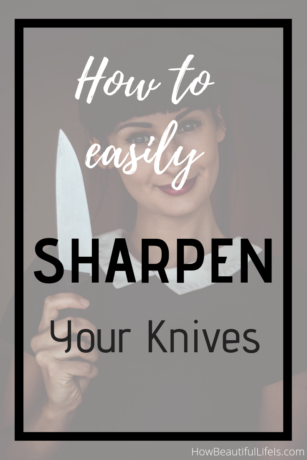

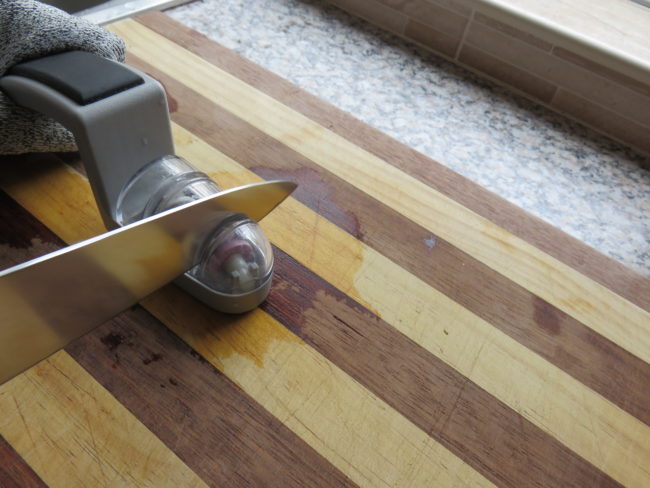
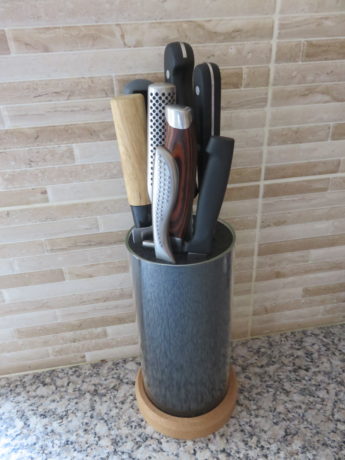



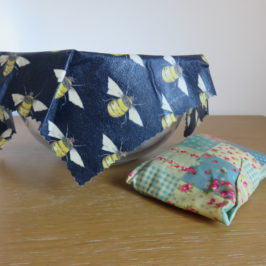
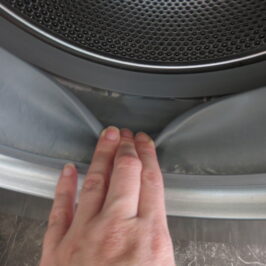
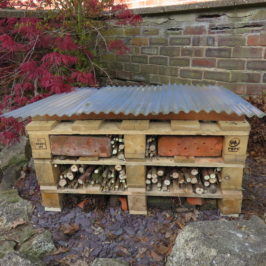
Leave a Reply